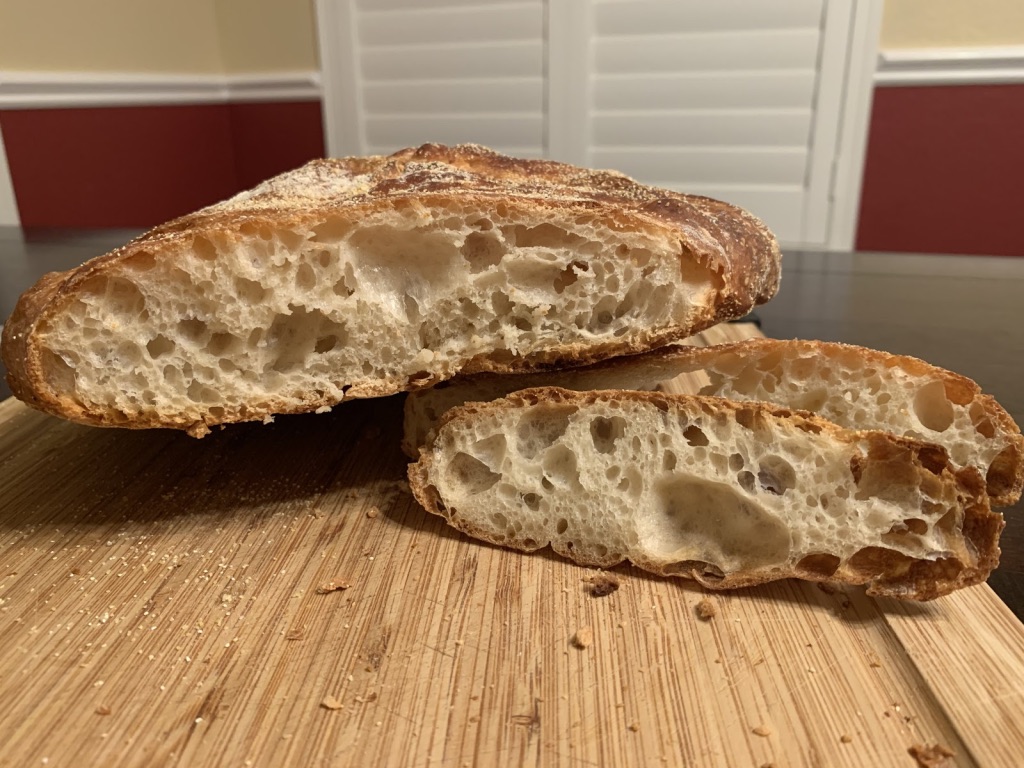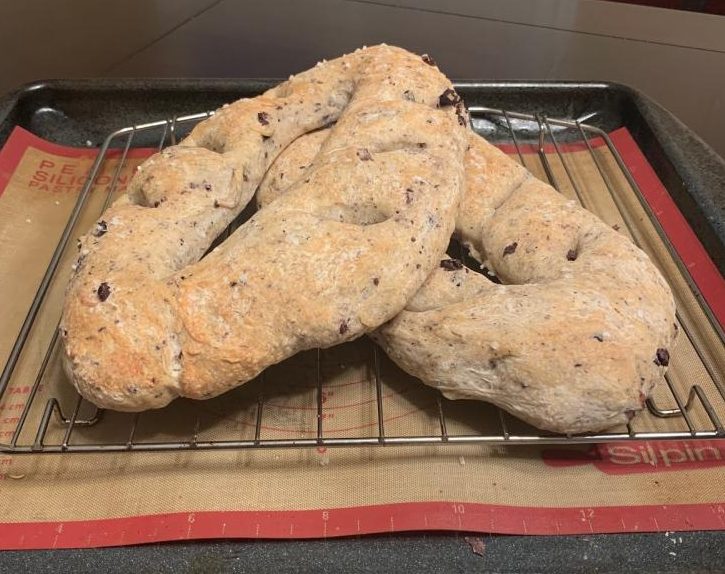If I could explain the phenomenon of baking bread during the pandemic, I would. Maybe it has to do with the primitive feeling of kneading a ball of dough. Or perhaps it’s the patient process of watching your humble concoction of flour, yeast and water double, or even triple, in size. Or it could just be that you have lost the willpower to wake up for online classes or wear pants with a zipper, but god damn it, when all else fails, at least you can create a loaf of comfort with your own hands.
As many before me, I have caved into the universal gut reaction to crisis and began baking bread in quarantine. In fact, I have already baked four types of bread. And I can confirm, there is nothing quite as comforting as holding a warm loaf, nothing quite as satisfying as watching the steam rise up from it as you slice it open, and nothing quite as rewarding as letting an absurdly decadent pat of salted butter melt into every crevice, using it as an anchor for a piping hot broth or just eating it plain.
When I first decided that I would take a shot at baking bread from scratch, I was craving something rustic and crusty, a perfect pair to soup or olive oil. I was also incredibly intimidated by yeast, and wanted to go with the most simple, hands-off recipe I could find. Even though I had never been to Sullivan Street Bakery before, making a recipe from a New York City restaurant evoked a certain nostalgia in me.
Patience, I learned, was something I did not have, and something yeast would test me on. I tried following an updated version of the recipe that supposedly only required four hours for the bread to rise. I checked on my dough two hours after setting it down to rest, and panicked when I saw that it had hardly expanded. I was certain I had done something wrong and reluctantly decided to wait until the following day to bake it. And I’m glad that I did. Overnight, the bread doubled in size and when I checked in on it, I was greeted by bubbles forming at the surface.
After shaping the dough and letting it rise for two more hours, the bread was ready to bake. Forty-five minutes later, the crust was golden brown and the house was filled with the smell of freshly baked bread. Easy to follow yet remarkably impressive, I would recommend this recipe to anyone from bread-novices to those confidently making their own sourdough starter (how do you do that, by the way?).

I would be lying if I said that I made this bread for a reason other than its looks. I may be a fan of olives, but I am an even bigger fan of impressing my mom’s friends on WeChat with photos of my creations she sends them, so with that in mind, I got to baking this bread.
The process for making the dough was pretty similar to that of the no-knead bread, except for the addition of olives and rosemary. The biggest difference came when I had to slash the dough before putting it in the oven to form the fougasse shape, and I must say, I have never felt fancier while using a pizza slicer.
The bread ended up delicious, though it did not come out looking as golden brown as the photos from the recipe I used. Still, out of the four breads, this one was my brother’s favorite, so I may or may not be making it again.

We had some bananas that were starting to ripen past the point of holding their shape, so my first thought was, “oh, I should make banana bread.” Banana bread seems to be everyone’s choice of bread baking during this quarantine. Why, you may ask? It is one of the few dishes that can qualify as a bread without requiring yeast. Determined to overcome my fear of yeast, I chose to make these banana bread cinnamon rolls that do, in fact, require yeast.
Why I decided to start this recipe at 9:30 at night before having to wake up at 6:30 a.m. the next day for my class is beyond me. But once I started, I couldn’t be stopped. This was by far the most complicated and laborious of the breads I made, confirmed as I feverishly attempted to roll my dough into a rectangle (which, by the way, is impossible) at 12 a.m.
That being said, these cinnamon rolls were delicious, and I would take them over banana bread any day.

There was a point in this quarantine where all I wanted was a sandwich, so if you’re wondering why I made the most boring bread on the planet, that’s why. The only problem? I didn’t have any whole-wheat flour. But that didn’t mean I would just settle for plain white bread. I still got some self-respect.
Instead, I used our family’s tiny coffee grinder to grind a blend of whole grains into powder, one-quarter cup at a time. So I take back what I said about the cinnamon rolls, this was by far the most laborious bread-making process of the four. This recipe also required 20 minutes of rigorous kneading, so I will now be accepting any comparisons of my arms to Michelle Obama’s.
I am definitely alone on this one among my family members, but this was my favorite out of the breads that I had made. Don’t get me wrong, they all enjoyed it, but I can’t deny that it lacked excitement. But amid a pandemic, I wanted nothing more than something simple and hardy, and this bread hit the spot. Because it was plain, it was the perfect foundation for peanut butter and jelly, a panini and a french toast. You really can’t go wrong with this one.

With this, I’m not saying that you have to bake bread while quarantined, but if you can get your hands on some flour and yeast, I can promise you there is no greater joy than a fresh loaf of bread you created. And now I know that this is only the beginning of my bread baking endeavors.
Email Divya Nelakonda at [email protected].
























































































































































